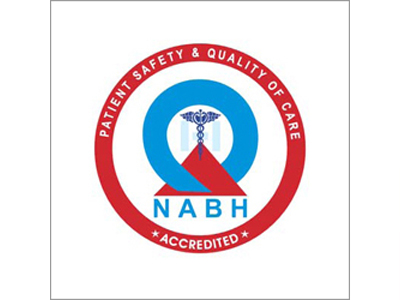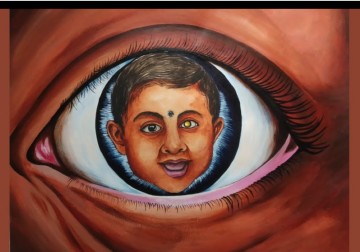In a new study, Drs. Swathi Kaliki, Vijitha S. Vempuluru, and other researchers from the Global Retinoblastoma Study Group used data from 10 countries to report on how delay in diagnosis, or lag time, of retinoblastoma affects patient outcomes.
Retinoblastoma, the most common eye cancer in children, is a fast-acting disease: the tumor has a doubling time of a fortnight. These tumors can fill up the ocular globe within months, killing most children with retinoblastoma before they are two years old. With early detection and prompt treatment, the chances of survival are strong, and perhaps even the eye can be saved too. But a delay can cause the tumor to spread, requiring the surgical removal of the entire eyeball (enucleation). A substantial delay can even cause the tumor to spread outside the eyeball and eventually kill the child. Since retinoblastoma is such a time-sensitive disease, delay in diagnosis becomes a crucial factor in its prognosis. So, could a longer ‘lag time’—delay between onset of retinoblastoma and diagnosis—lead to poorer outcomes in retinoblastoma? A few retrospective studies with limited data indicate that lag time correlates with a higher risk of extraocular tumor extension, need for enucleation, metastasis, and death.
In 2019, the Global Retinoblastoma Study Group, a group of 450 global experts on retinoblastoma, addressed these issues through a collaborative prospective study on a global scale, drawing on a cohort of 692 retinoblastoma patients. They found that lag time differed significantly between nations and was dictated by the nation’s income level. A low-income country will have a longer lag time, leading to lower chances of salvaging the eyeball or the patient’s survival. Longer lag time means that patients present with an advanced tumor, resulting in a higher risk of metastasis and death. So, lag time has a clear link to patient survival. But what about the eye? Does lag time impact the probability for enucleation?
In a new study published in the journal Seminars in Ophthalmology, Drs. Swathi Kaliki, Vijitha S. Vempuluru, and other researchers from the Global Retinoblastoma Study Group reported on how lag time affects the odds of enucleation and other outcomes in retinoblastoma. This study is a 3-year follow-up on the same 692-patient cohort (from 10 countries) as the 2019 study. Over half (57%) of the patients were from low- and middle-income countries. Most patients (77%) did not seek treatment at an early stage, presenting with large or extensive tumors (T2 or T3). The average lag time from the first observed symptom of retinoblastoma to seeking treatment was 150 days, or about 10 tumor doubling intervals for retinoblastoma.
Yet, the study found no concomitant increase in the risk of enucleation because of lag time. Instead, the risk of enucleation was linked with low socioeconomic status. Low- and middle-income countries that did not have eyeball salvaging modalities and other factors had a stronger association. So, nearly half of the children underwent enucleation within 3 months of their presentation, many after visiting at least 2 hospitals before finding a competent facility—a lag time that increases the odds of success. However, prolonged lag times and presenting with an advanced tumor were associated with an increased risk of death. The study highlights that while poverty impacts the risk of enucleation, reduced lag times will save lives. \
‘This study highlights the critical importance of early diagnosis in retinoblastoma,’ comments Dr. Swathi Kaliki, head of the Operation Eyesight Universal Institute for Eye Cancer at LVPEI and the corresponding author of the paper. ‘Delayed detection, common in low-income countries, often leads to significantly poorer outcomes compared to those in high-income settings.’
Citation
Kaliki, S., Vempuluru, V. S., Desai, A., Ji, X., Zou, Y., Rashid, R., Sultana, S., Sherief, S. T., Cassoux, N., Diaz Coronado, R. Y., Garcia Leon, J. L., López, A. M. Z., Polyakov, V. G., Ushakova, T. L., Yarovoy, A. A., Rani Roy, S., Ahmad, A., Al Harby, L., Reddy, M. A., Sagoo, M. S., … Didi Fabian, I. (2025). Lag Time Between Onset of First Symptom and Treatment of Retinoblastoma: Outcomes at Three Years from Recruitment. Seminars in Ophthalmology, 1–7. Advance online publication. https://doi.org/10.1080/08820538.2025.2491004
Photo credit: LVPEI.



